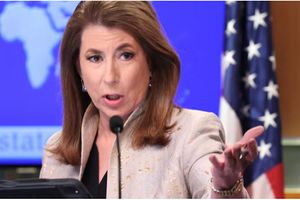Prime
Magufuli City: Tanzania’s new administrative powerhouse

What you need to know:
- This carefully designed “Government City,” which is tucked away in Ihumwa ward aims to consolidate all governmental operations into a single and dynamic centre
Dodoma. Seventeen kilometres from Dodoma’s city centre lies a modern development that is set to redefine the administrative landscape of Tanzania: Magufuli City.
This carefully designed “Government City,” which is tucked away in Ihumwa ward, covers more than 617 hectares (1,542 acres) and aims to consolidate all governmental operations into a single and dynamic centre.
The project, already partially completed with several buildings in operation and others under construction, according to a recent survey by The Citizen, is heralded as a symbol of Tanzania’s growth and modernisation.
Named after former President Magufuli, the city is not just another urban development; it is a strategic move to streamline government operations.
It is divided into distinct zones, including areas for government ministries, diplomatic offices, national housing and social services. Others include commercial sectors, the Parliament, courts, parking, and wastewater management. Each building within the city adheres to a uniform design, creating a cohesive and visually appealing environment.
“Having all government offices in one place will greatly enhance efficiency,” said an urban planning expert, Dr Rehema Mshana.
“Citizens will no longer need to traverse different parts of Dodoma to get their documents signed. This centralisation will save time and resources, making government services more accessible to the public.”
The development of the city is expected to bring numerous benefits to the surrounding areas, particularly the Mtumba and Ihumwa wards. Local residents are already anticipating the economic opportunities that come with such a significant influx of government employees and visitors.
“With the completion of Magufuli City, we expect to see a surge in demand for housing, retail, and other services,” said Mtumba resident Mr John Mwita.
“This project is a beacon of hope for many of us, as it has and will continue to create jobs and boost local businesses.”
Similarly, Ihumwa resident Ms Amina Komba expressed her optimism about the project to The Citizen. “The city is bringing development closer to us. We see new roads, better infrastructure, and more opportunities for our youth.”
A critical component of Magufuli City’s planning is its infrastructure. The city is designed to use 3,016.7 cubic litres of water per day, with a modern wastewater system that treats and recycles water, ensuring sustainability.
This focus on environmental responsibility is a key aspect of the city’s design.
“Modern infrastructure and sustainable practices are at the heart of this development,” said a local engineer, Mr Michael Kibwana, in an interview.
“Our goal is to create a city that not only meets the administrative needs of the government but also sets a standard for future urban developments in Tanzania.”
Despite the many advantages, the creation of Magufuli City has not been without its challenges. The project, with an estimated cost of $4.788 billion (Sh10.7 trillion), represents a significant investment for the country. However, regional officials and planners are confident that the long-term benefits will far outweigh the initial expenditures.
“We are aware of the financial and logistical challenges,” admitted one of the National Housing Corporation engineers on sight, who sought to remain anonymous.
“But we are committed to seeing this project through. The benefits in terms of efficiency, economic growth, and improved quality of life are immense.”
Experts also highlight the importance of ensuring that the city remains inclusive and accessible to all Tanzanians.
“It is crucial that Magufuli City does not become an isolated enclave for government officials,” noted Dr Mshana. “The success of this project will depend on its integration with the broader community and its ability to serve as a catalyst for regional development.”
The voices of residents neighbouring the city offer a glimpse into the project’s potential impact. For many, Magufuli City represents a promise of progress and a departure from the past inefficiencies of dispersed government offices.
“I used to travel from one office to another to get documents processed, which was time-consuming and costly,” said Dodoma resident Mr Peter Mlambo. “Having everything in one place will be a game-changer.”
Women in the community, such as Neema Kileo from Ihumwa, are particularly hopeful. “This city is not just about buildings; it’s about opportunities. We hope to see more employment for women and better services for our children.”
A new dawn for Dodoma
As construction progresses and more buildings within Magufuli City become operational, the vision of a unified, efficient, and modern administrative capital is steadily becoming a reality.
This project exemplifies the forward-thinking approach that is necessary for Tanzania’s development and sets a precedent for future initiatives.
With strategic planning, community involvement, and a commitment to sustainability, the modern city stands poised to transform not just Dodoma but the entire nation.
“The determination that is seen on the part of the government and collaborative effort with experts and residents alike will ensure that this unique city becomes a cornerstone of Tanzania’s progress and prosperity,” affirmed Dr Mshana.
Looking at international examples, the development of administrative hubs has been successful in various countries. For instance, in Brazil, the creation of Brasília in the 1960s as the new federal capital allowed for better urban planning and government efficiency.
Similarly, Malaysia’s Putrajaya, designed to be the administrative centre, has streamlined government functions and boosted economic growth.
These cities demonstrate how strategic urban planning can facilitate governmental operations and enhance economic development. Tanzania, the city, stands as a model for other African nations.




